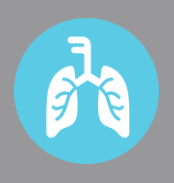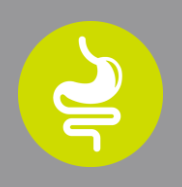Learning Center
Rapid Molecular Diagnostic Testing
The BioFire and GenMark systems at UC Davis Health are important tools for the timely diagnosis and identification common infections including bacteremia, respiratory infections, gastroenteritis, and meningoencephalitis. As with any tool they have certain strengths and limitations dependent on the contexts in which it is ordered and how it is used. All of the BioFire and GenMark panels have significant financial costs which should preclude their routine use for uncomplicated disease processes. The following are some clinical guidance on the optimal use of our various BioFire systems:
Blood Culture Identification (BCID) Panel (by BioFire)

The BCID panel allows for the rapid identification of 24 common pathogens known to cause blood stream infection. The panel additionally tests for three common resistance genes associated with some of these pathogens. It is run on positive blood cultures at the same time gram staining is performed with a preliminary identification made in 1-2 hours, about 24 hours sooner than prior methods utilizing MALDI-TOF. It is consistently sensitive (~98% overall) and specific (~99% overall) making the test result useful and actionable for antibiotic management. The test is reflexively done on all initial positive blood cultures, and does not require a separate order.
The BCID report appears in Epic attached to blood culture reports as to the right. If a target is detected and is consistent with gram stain results identification is accurate in the great majority of circumstances. Because the BCID panel can detect DNA primers at a higher taxonomic level for some organisms (at the genus and family and not just species), multiple flags may sometimes fire leading to results that may be difficult to interpret. In the example to the right, both "Staphylococcus" and "Staphylococcus aureus" fired because the DNA primers for both Staphylococci in general and Staphylococcus aureus more specifically were detected. If only the "Staphylococcus" target had been detected in the absence of the "Staphylococcus aureus" target it is likely the organism would have eventually be identified by conventional means as a coagulase-negative Staph (CoNS). Similar phenomena may occur with the "Streptococcus" and "Enterobacteriaceae" genus targets. As another example a positive "Enterobacteriaceae" in the absence of any other flags firing likely indicates a gram negative organism present within the family Enterobacteriaceae but not one of the Enterobacteriaceae targeted (i.e. E. cloaecae, E. coli, K. oxytoca, K. pneumoniae, S. marcescens, or Proteus) where as a blood culture with both an "Enterobacteriaceae" and a "Proteus" flag firing is most likely due to presence a Proteus species alone. Also of note in the first example pictured right, the mecA gene was detected indicating this Staphylococcus aureus isolate is most likely methicillin-resistant, or MRSA.
If a polymicrobial infection or process is not suspected, antibiotics may be narrowed to target the identified organism in the great majority of cases. Conversely, in a patient without clear signs or symptoms of infection but with a single blood culture bottle growing gram positive cocci and only the "Staphylococcus" flag firing, antibiotics can likely be avoided as the blood culture is likely to grow out CoNS consistent with contamination.
Pathogens include:
Gram + Bacteria
- Enterococcus
- Listeria monocytogenes
- Staphylococcus spp.
- S. agalactiae (group B)
- S. pneumoniae
- S. pyogenes (group A)
Resistance Genes
- mecA - methicillin resistance
- vanA/B - vancomycin resistance
Gram – Bacteria
- Acinetobacter baumannii
- Haemophilus influenzae
- Neisseria meningitidis
- Pseudomonas aeruginosa
- Enterobacteriaceae
- Enterobacter cloacae
- Escherichia coli
- Klebsiella oxytoca
- Klebsiella pneumoniae
- Serratia marcescens
Resistance Genes
- KPC - carbapenem resistance
Yeast
- Candida albcians
- Candida glabrata
- Candida krusei
- Candida parapsilosis
- Candida tropicalis
Respiratory Panel (by GenMark)

The Respiratory panel detects nine common respiratory viruses and two atypical bacterial pathogens known to cause respiratory disease with a combined sensitivity of 98% and specificity of 99% for nasopharyngeal swabs. It does NOT detect certain strains of coronavirus including the strains that cause MERS and SARS nor does it detect all atypical pathogens such as Legionella or Bordetella. Due to the communicable nature of many of the organisms tested for by the Respiratory panel, ordering a test reflexively results in a patient being placed in droplet and contact precautions until additional results are obtained. The Respiratory panel is frequently ordered, but the results have not always had a clear impact on subsequent patient management. Given the considerable expense involved in ordering a Respiratory panel consider only ordering if the patient's stay is anticipated to be >24 hours (as the tests are batched, only run on the weekends during flu season, and the turnaround time can be up to 48 hours) and results are likely to change management such as avoiding antimicrobials or additional diagnostic work up.
Pathogens include:
Viruses
- Adenovirus
- Coronavirus
- Excluding SARS & MERS strains
- Human Metapneumovirus
- Rhinovirus/Enterovirus
- Influenza A
- Parainfluenza 1 — 4
- Respiratory Syncytial Virus (RSV)
Atypical Bacteria
- Chlamydia pneumoniae
- Mycoplasma pneumoniae
Gastrointestinal (GI) Panel (by BioFire)

The GI Panel tests for a variety of viral, bacterial, and parasitic causes of gastroenteritis and diarrhea. The overall sensitivity (~98%) and specificity (99%) obviate the need for serial testing for most listed pathogens. Sending a repeat sample within 30 days is therefore unlikely to be useful and should not be performed in most cases. Some infectious causes of acute diarrhea such as Aeromonas and Listeria and some infectious causes of chronic diarrhea such as Microsporidia are not detected by the panel and require additional, separate stool testing if suspected. Due to the communicable nature of many of the organisms tested for by the GI panel, ordering a test reflexively results in a patient being placed in contact enteric precautions until additional results are obtained. As most cases of gastroenteritis are self-limited without treatment options, it is recommended the GI panel be reserved for cases lasting longer than 5-7 days or only if red flag symptoms are present (i.e. fevers, blood in the stool, severe abdominal pain, dehydration, or illness requiring hospitalization).
Pathogens include:
Bacteria
- Campylobacter
- Plesiomonas shigelloides
- Salmonella
- Yersinia enterocolitica
- Vibrio spp.
- Vibrio cholerae
- Escherichia coli
- Enteroaggregative E coli (EAEC)
- Enteropathogenic E coli (EPEC)
- Enterotoxigenic E coli (ETEC)
- Shiga-like toxin-producing E coli (STEC)
- E coliO0157
- Shigella/Enteroinvasive E coli (EIEC)
Viruses
- Adenovirus F40/41
- Astrovirus
- Norovirus GI/GII
- Rotavirus A
- Sapoviruses I, Il, IV, and V
Parasites
- Cryptosporidium
- Cyclospora cayetanensis
- Entamoeba histolytica
- Giardia lamblia
Meningoencephalitis (ME) Panel (by BioFire)

The ME Panel tests for 14 different common viral, bacterial, and fungal causes of meningitis and encephalitis with combined sensitivities and specificities of ~94% and ~99% respectively. A negative HSV PCR has excellent sensitivity and specificity allowing for the discontinuation of acyclovir, if empirically started, in most patients. A positive test in a patient with consistent CSF and clinical findings is highly accurate and allows for the early targeting of antimicrobials. The ME Panel does not test for most common arbovirus causes of encephalitis (such as West Nile, St Louis, and western and eastern equine encephalitis), however, nor does it test for other pathogens possibly responsible for meningitis like lymphocytic choriomeningitis virus (LCMV) and Lyme. Due to the communicable nature of Neisseria meningitidis and Haemophilus influenzae, ordering a test reflexively results in a patient being placed in droplet precautions until additional results are obtained or the patient has been on effective therapy for > 24 hours.
Pathogens include:
Bacteria
- Streptococcus pneumoniae
- Streptococcus agalactiae
- Neisseria meningitidis
- Haemophilus influenzae
- Listeria monocytogenes
- Escherichia coli K1
Viruses
- Cytomegalovirus (CMV)
- Enterovirus
- Herpes simplex virus 1 (HSV-1)
- Herpes simplex virus 2 (HSV-2)
- Human herpesvirus 6 (HHV-6)
- Human parechovirus
- Varicella zoster virus (VZV)
Yeast
- Cryptococcus neoformans/gattii
